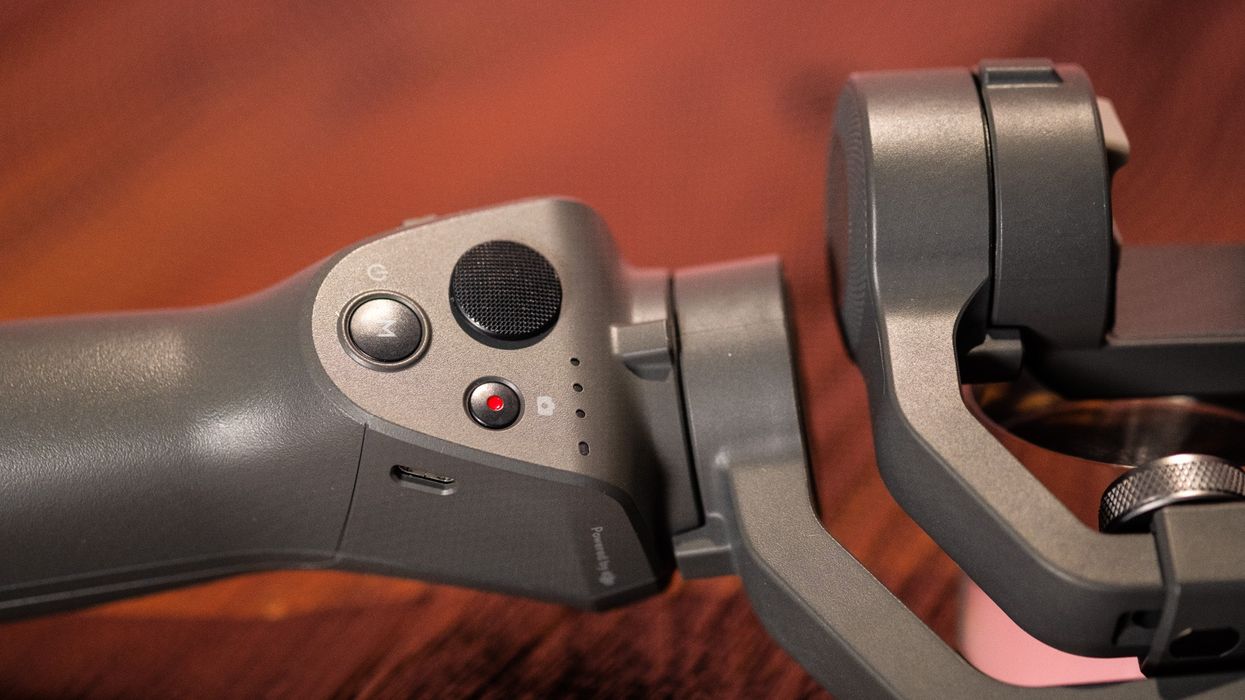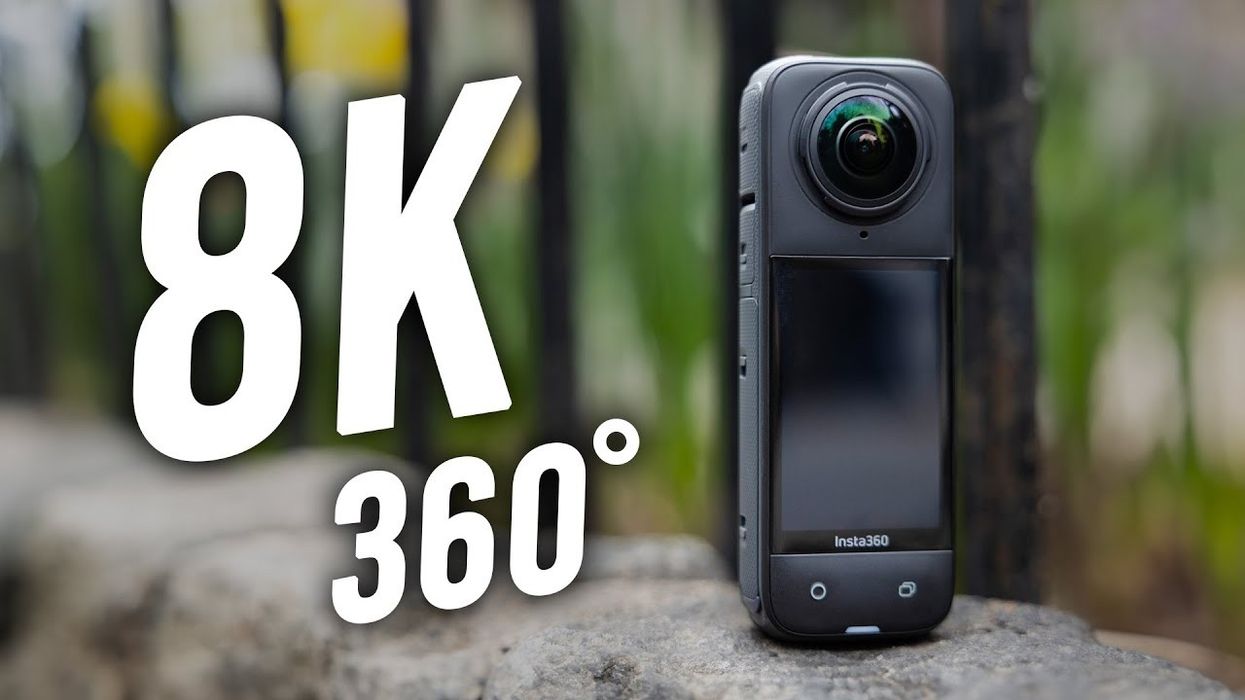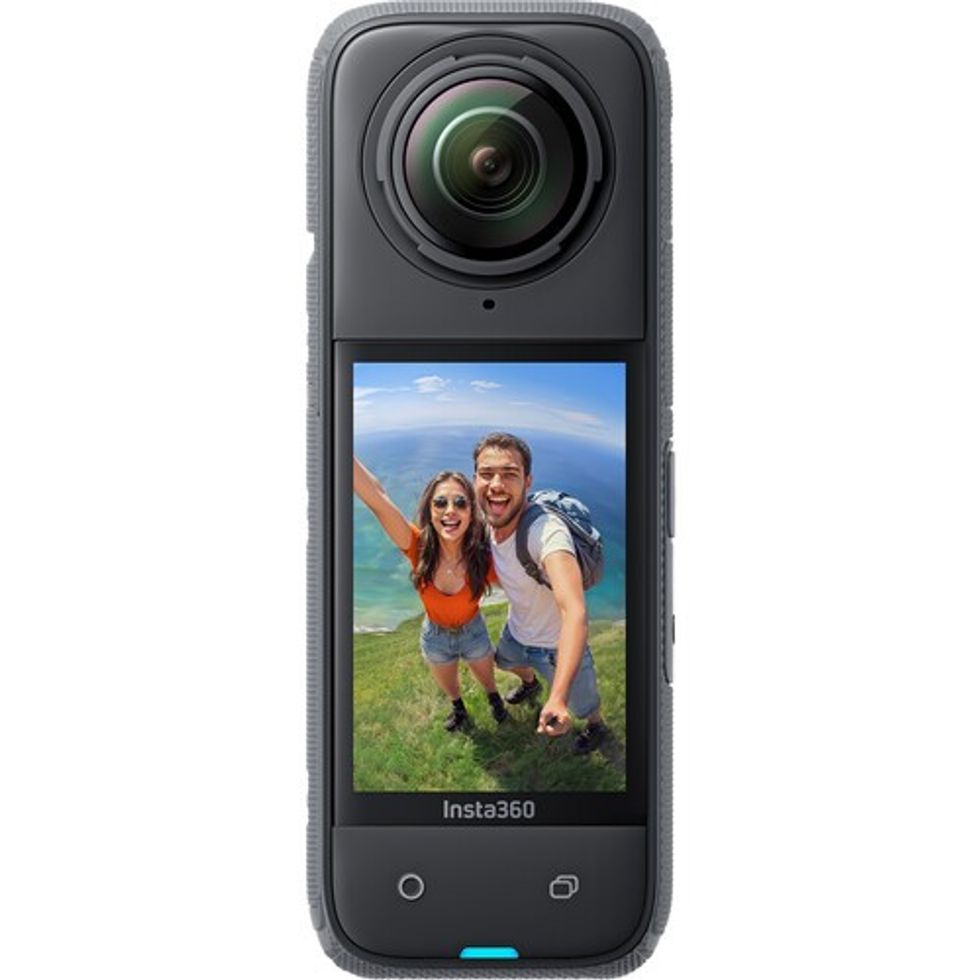Field Test: DJI Osmo Mobile 2 is Becoming an Essential Tool for Scouts
DJI's smallest stabilizer gets a revision that makes it close to essential for any scout bag.

The original DJI Osmo could almost be said to have invented the category of the truly handheld stabilizer. By taking the three-axis stabilizer and camera from a drone and giving it a handle, DJI created a tool that could do amazing moves while staying smooth in a compact body. Image quality in day exterior situations was even pretty usable, but it was too weak in low light to be a viable all-around tool.
Thus, the original Osmo didn't really start showing up on a bunch of sets. However, the DJI Osmo Mobile, which attaches to your smartphone, did start making appearances. This hasn't generally been for A camera work, even though we all know about Tangerine and Unsane and the viability of the iPhone as an A camera. Rather, it has been used as a handy tool to keep around for previsualizing elaborate Steadicam moves ahead of time, either on a scout or even on set before the steadi op arrives.
Osmo vs. Osmo Mobile
The biggest reason for seeing more of the Mobile (designed to work with your phone) rather than the plain Osmo (which costs more and has an included camera) is that smartphone camera technology can just innovate faster than integrated camera tech can keep up with. With the Mobile, as you get a new phone with a new camera (or, sometime soon, a new holographic capture device like the RED Hydrogren), and you can mount it up and go.
This doesn't mean that the plain old Osmo is done. If you want to mount something to the hood mount of a car, or put it in some other dangerous situation, risking the all-in-one makes more sense than risking the camera, and the folks we know who own Osmos love them. What they don't address, however, is one of the most common questions we get asked: What stabilizer should I get to bring on scouts and plan out shots? For a filmmaker who might be scouting dark night exteriors, but is guaranteed to have their fancy new smartphone with them, the Osmo Mobile has been a better choice than the integrated Osmo. The full-sized Osmo is also a little pricey as a scout tool, at $449 vs. $129 for the Mobile.
iOS Focus
The Osmo Mobile 2 is a major revision focused on three key areas: lightweight (using nylon for the body), integration with smartphone features especially on iOs, and battery life. It's so iOs-oriented, in fact, that it was originally an Apple store exclusive, and has only just rolled out to the wider retail chain. All of our testing was done with an iPhone 6S (headphone jack for life) and we found it to be the ideal combination even without the features that are offered through its integration with the iPhone X.
iPhone-using early adopters have already started giving it a shot, and users are especially excited about the abilities of the gimbal to integrate with the human sensing technology built into the iPhone X to accurately track your subject. However, this is apparently best done through the native DJI camera app, as there have been some issues of interference between the gimbal stabilization and the in-camera stabilization when using the native phone app.
Panning and Tilting
Of course, the Mobile 2 isn't built only for active tracking. When working with an older iPhone or with an Android, there is still a traditional thumb control for panning and tilting that most filmmakers will likely rely on quite a bit. As is the case with every single gimbal from the entry level (at $129, this is that) on to the top of the line, starting and stopping is the trickiest part. You should have great results choreographing elaborate, fun, tricky shots that start moving and end moving, but if you want to land that into a close-up, there might be a slight hiccup on your landing. This is just the nature of all stabilization (even with a full-fledged Steadicam, it take operators practice to learn how to land properly), and that isn't quite something you'll find here yet without practice. Of course, the Ronin 2 does making a static landing a little easier, but will usually require two people or even three to do so (and at a much different price point).
Light weight & USB Charger
The weight (only 485 grams) is really amazing, you kind of need to pick one up to really see how light it feels. Nylon, commonly known to many as a fabric, is a strong, light polymer that is perfectly used here. Leaving this permanently in your scout backpack will not adversely affect you as you climb stairs and hike hills to find shoot locations, and you'll be relieved to discover that it is there when you need it.
One especially appreciated feature is that it can also charge your phone via USB. Considering how often we find ourselves fighting over the car USB on scouts (we actually got a little dual USB charger for our truck so more team members could charge phones on a scout), any extra method of keeping everyone's phones alive is huge. After all, these days smartphones serve as cameras, viewfinders, notetaking apps and more while we are working.
Drawbacks
One thing lost with the mobile versus the full Osmo is rosette mounts for items like external monitors, microphones, or mounting in various configurations. There is still a 1/4-20 tripod mount on the bottom, which is appreciated, but this isn't intended as the "do everything" gimbal. It's targeting a more consumer space (where they won't really be using accessories) and will likely slot into the "prep tool" for filmmakers more than the "final delivery" tool.
There is no such thing as a perfect tech object, and there is a flaw here as well: it's just not that compact. This is a tool that requires a bookbag, or at bare minimum a purse or fanny pack, to "bring along" for the day. Multiple times we thought about bringing it along on errands (it weighs so little!) and decided against it since it just doesn't shrink that much. Considering the intense focus on folding and compact storage for the Spark and Mavic lines of drones, it's something of a surprise that the Osmo doesn't have that focus. Perhaps the assumption was that for most times you would want this, you would have a backpack or a purse.
There are already "collapsable" stabilizer units like the Snoppa, which we used last year in our Charters pole test, but they aren't ideal. With the Snoppa, in particular, we were constantly pinching little bits of skin painfully when packing it up, and it lacks anything like the sophistication and integration of the Osmo 2. We expect that the next wave of innovation for this technology is to see it evolve into more collapsible, foldable, pocketable formats.
Available now for only $129 at Adorama.
Features & Specs
- Capture Stabilized Handheld Footage
- 485g
- Supports up to 3.3" Wide Smartphones
- Syncs up with Multi-Mode DJI GO App
- 15 Hour Run-Time
- Tracking Technology Built Into App
- Portrait, Underslung, Flashlight Modes
- On the Move Time-Lapse Feature
- Panorama Function
- 1/4"-20 Tripod Mount
All photos by Charles Haine.


















